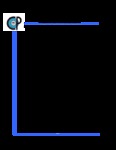| dc.contributor.author | Ramírez Cruz, Maidali Erizabeth | es |
| dc.creator | RAMIREZ CRUZ, MAIDALI ERIZABETH; 35775 | |
| dc.date.accessioned | 2012-09-08T04:54:42Z | |
| dc.date.available | 2012-09-08T04:54:42Z | |
| dc.date.issued | 2009 | es |
| dc.identifier.uri | http://hdl.handle.net/10521/1292 | |
| dc.description | Tesis ( Doctorado en Ciencias, especialista en Hidrociencias).-Colegio de Postgraduados, 2009. | es |
| dc.description.abstract | Los incendios forestales, además de afectar la calidad del aire y la cubierta vegetal,
provocan cambios importantes en las propiedades hidrológicas del suelo, aceleran el
proceso de erosión y contaminan por sedimentación. Sin embargo, en México, la
información relacionada con los incendios esta más enfocada a estudiar y documentar el
impacto ambiental sobre la calidad del aire y la cubierta vegetal, sin ahondar en los efectos
sobre el suelo , el escurrimiento superficial y la producción de sedimentos. Por tal motivo,
el objetivo de este trabajo fue evaluar la severidad de la quema sobre la infiltración del
agua, la producción de escurrimiento superficial y sedimentos. Se evaluaron doce
tratamientos derivados de las cuatro severidades de quema alta, media, baja y sin quema,
combinados con tres intensidades de lluvia simulada de 25, 50 y 80 mm h-1. Como
variables de respuesta se utilizó el escurrimiento superficial, la infiltración y la producción
de sedimentos, los cuales fueron medidos en lotes de escurrimiento de 7 m de largo por 1 m
de ancho, con pendientes de terreno que variaron de 6 a 9%.
En las severidades de quema baja, media y alta con 80 mm h-1 se presento el mayor gasto
que vario de 64.5 a 72.3 mm h-1, con 50 mm h-1 se redujo a 32.7-41.4 mm h-1 y con 25 mm
h-1 se redujo a 2.4-11.9 mm h-1. En el lote sin quema el gasto fue de 35.9, 0.40 y 0.0 mm h-1
para las intensidades de 80,50 y 25 mm h-1, respectivamente. Las mayor producción de
sedimentos (5.8-9.1 t ha-1) se presento en los lotes con severidad de quema baja y alta, con
50 y 80 mm h-1 mientras que la menor producción de sedimentos (0.027-2.54 t ha-1) se
presentó en los lotes con severidad de quema media y sin quema con 25 mm h-1 De
acuerdo con lo anterior se puede decir independientemente de la severidad de quema, la
intensidad de la lluvia fue el factor que más influyo en la producción de escurrimiento y
sedimentos._________The forest fire besides affecting the air quality and the vegetal cover to cause important
changes in the hydrology properties of the ground, they accelerate the erosion process
contamination by sedimentation. However, in Mexico, the information link with the forest
fire is focus in study and to document the impact in the air quality and the forest cover,
without going deep in the effects on the ground, surface runoff and sedimentation
production. For this reason the objective of this word was to evaluate the severity of the
forest fire on the water infiltration, the production of surface runoff and sediments. Twelve
treatments were evaluated derived from four severities of high fire, medium fire, low fire
and without fire, combined with tree intensities of rain simulated of 25, 50 y 80 mm h-1.
As variable of answer the surface runoff, the infiltration and sediments production were
used, which were measured in draining lots of 7 ms of length by 1 m of width, with land
slopes which they varied from 6 to 9%.
In severities of low, medium and high fire with 80 mm h-1 I appear the greater cost than
vary of 64,5 to 72,3 mm h-1, with 50 mm h-1 it was reduced to 32.7-41.4 mm h-1 and with
25 mm h-1 it was reduced to 2.4-11.9 mm h-1. In the lot without fire the cost was of 35.9,
0.40 and 0.0 mm h-1 for the intensities of 80, 50 and 25 mm h-1, respectively. The greater
production of sediments (5.8-9.1 t ha-1) appear in the lots with severity low and high fire,
with 50 and 80 mm h-1 while the smaller sediments production (0.027-2.54 t ha-1) appeared
in the lots with severity of medium fire and without fire with 25 mm h-1
. In agreement with
the previous I can say independent of the fire severity, the rain intensity was the factor that
influences more in the surface runoff production and sediments. | es |
| dc.description.sponsorship | COLPOS | es |
| dc.language.iso | spa | es |
| dc.rights.uri | http://creativecommons.org/licenses/by-nc-nd/4.0 | |
| dc.subject | Severidad de quema | es |
| dc.subject | Sedimentos | es |
| dc.subject | Escurrimiento superficial | es |
| dc.subject | Lluvia simulada | es |
| dc.subject.ddc | Doctorado | |
| dc.subject.ddc | Hidrociencias | |
| dc.title | Impacto del fuego sobre la erosión hídrica y el escurrimiento superficial, utilizando lluvia simulada: Caso de estudio Volcán Pelado, Distrito Federal, México | es |
| dc.type | Tesis | es |
| Tesis.contributor.advisor | Oropeza Mota, José Luis | es |
| Tesis.contributor.advisor | Benavides Soloria, Juan de Dios | es |
| Tesis.contributor.advisor | Rodríguez Trejo, Dante Artuto | es |
| Tesis.contributor.advisor | Mejía Sáenz, Enrique | es |
| Tesis.contributor.advisor | Uresti Gil, Jesús. | es |
| Tesis.subject.nal | Erosión - México (Ciudad) | |
| Tesis.subject.nal | Incendios forestales - México (Ciudad) | |
| Tesis.subject.nal | Precipitación artificial - México (Ciudad) | |
| Tesis.subject.nal | Contenido de agua en el suelo - México (Ciudad) | |
| Tesis.subject.nal | Experimentación en campo - México (Ciudad) | |
| dc.subject.ingles | Fire severity | es |
| dc.subject.ingles | Sediments | es |
| dc.subject.ingles | Surface runoff | es |
| dc.subject.ingles | Simulated rain | |
| dc.type.conacyt | doctoralThesis | |
| dc.identificator | 6 | |
| dc.contributor.director | OROPEZA MOTA, JOSE LUIS; 3806 | |


